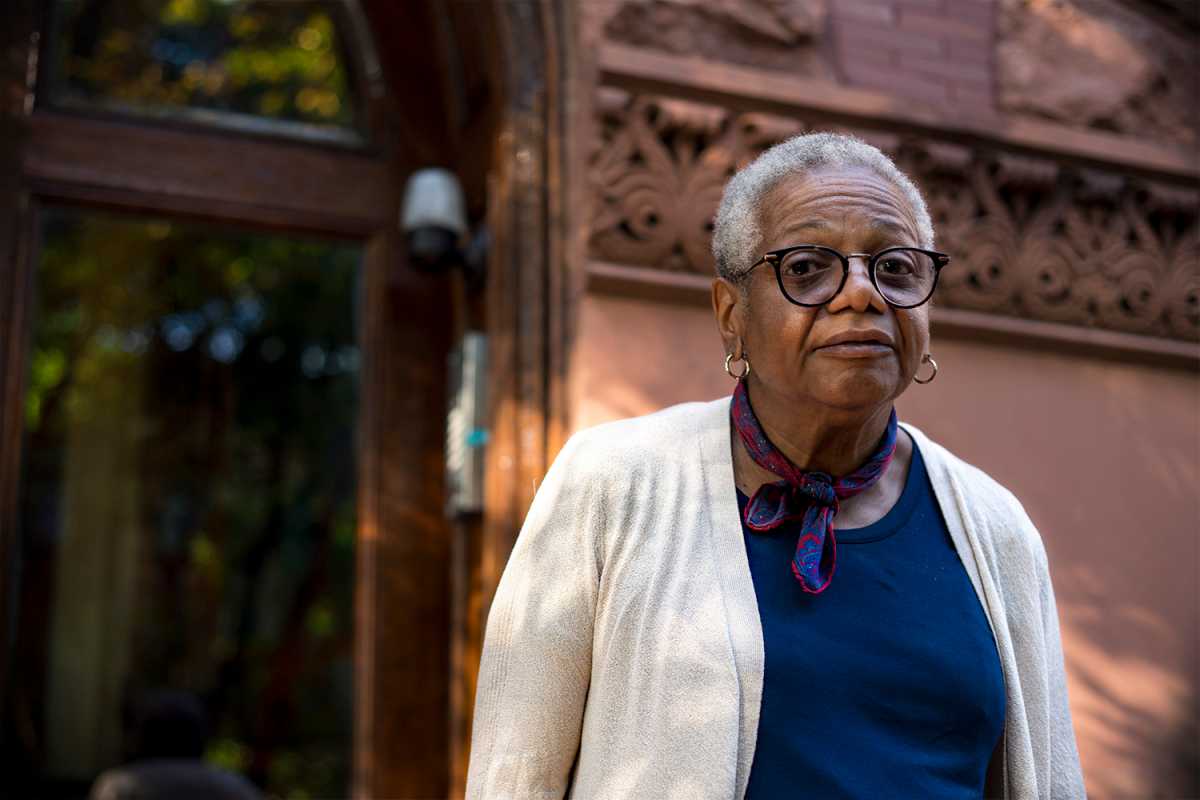Editor’s Note: The following is the 14th of a KCP investigative series by reporters Kelly Mena and Stephen Witt on how New York City is taking paid off properties from longtime small property owners, including black and brown seniors, and giving them to connected non-profit and for-profit developers as gentrification sweeps across Brooklyn.
More than a month has passed since the city announced it reversed its decision to take retired nurse Marlene Saunders’ fully paid off brownstone house on a gentrified Crown Heights block, but according to city records it has yet to do so.
The city took the property, which has been in the Saunders family for 30 years and appraised at over $1.2 million, last November just a month shy of Christmas. It was part of a court judgement, in which 64 properties – predominately in black and brown neighborhoods in Brooklyn – were seized on the same date.
Saunders, 74, and her family first learned that the city’s Housing Preservation and Development (HPD) had taken the well-kept brownstone at 1217 Dean Street through its Third Party Transfer (TPT) program in September through a flier slipped under their door. The reasoning for the seizure was the brownstone was classified as a “distressed property” and they were behind on their property and water taxes.
However, after KCP, City Council Member Robert Cornegy Jr. (D-Bedford-Stuyvesant, Northern Crown Heights) and reportedly Public Advocate Letitia James reviewed that the Saunders family did in fact pay their taxes and the property was not distressed, the city agreed to give the property back.
“Upon investigation, it appears the owner made a mistake in applying the necessary payment to the wrong property. It is obvious this was a simple error and so we will reverse the transfer so that the owner can sustain ownership of the property,” said a HPD spokesperson on Sept. 17.
Saunders Attorney Jackie McMickens said she gave city attorneys two weeks to start the filing so that Saunders could get the deed back and today was the deadline for that.

“I understand from the city that they are working on it, but it is not on ACRIS [city records website] yet,” said McMickens. “If in fact it doesn’t happen, I will start a lawsuit. That’s not out of the picture yet.”
McMickens said she sent a letter to the city attorney to this effect and the city has not responded.
McMickens said she is not interested in the other properties on the foreclosure list as she doesn’t represent any of those property owners. That said, she surmised the city may be slow in giving Saunders her property back because it puts the city in a sticky legal position regarding the other foreclosures on the list.
“They [the city] might be trying to see what makes this one foreclosure different from all the others. If I was in legal [for the city] I would think about that,” said McMickens, adding they could give Saunders the property back for a dollar to minimize their legal damage.
Meanwhile, in one of the other legal cases on the same foreclosure list that KCP has been following, Kings County Supreme Court Judge Mark Partnow this week gave the city an extension until Nov. 27 to come up with an argument to show cause why they should be allowed to take the property at 25 McDonough Street in Bedford-Stuyvesant, which is assessed at $3.2 million.
Until that date, a temporary restraining order remains in place meaning the city cannot proceed with plans to take the property under the TPT program.
Ronald Callender, a Barbadian immigrant who worked as a mechanic on Atlantic Avenue, bought the 19-unit rent stabilized apartment building in 1968, kept it during the city’s lean years, paid it off and left it to his son and two daughters under the name Gilmer Holding Corp.
However, the son, who was named executor of the estate mismanaged the building and several months ago, the two daughters enlisted their first cousin, Lamarr Jones, a graduate of finance from the prestigious historically black school, Morehouse College to come in and straighten things out.
Jones entered into a property payment installment agreement with the city on Nov. 2, 2017 and made an initial payment of $25,000 for back payment of the property and water taxes, as well as an additional $535 to get the property in a payment plan to stop the city’s collection process.
Jones also participated in HPD’s Alternative Enforcement Program (AEP) and cleared up 82 percent of the relatively minor building code violations. What neither he nor the AEP director nor the tenants knew at this time was that the family already lost the building in a foreclosure court to the TPT program.

Despite the court’s restraining order, the Wall Street non-profit Urban Homesteading Assistance Board (UHAB), which the city appointed as the building’s “sponsor” has continued to meet with tenants to discus their plans to take the building. It was not until KCP attended one of these meetings and informed the tenants there was a temporary restraining order in place that they knew the building could go back to the former owners.
UHAB has since informed the tenants that if the lose in court both they and HPD will go away. Their next scheduled meeting with tenants is Nov. 5.
Meanwhile, HPD remains reluctant to answer several of KCP’s questions regarding the TPT program.
Among these questions are who are the favored non- and for-profits developers in the pool that is allowed to get these fully paid off properties? What are these sponsors’ fees and payment structure and who pays them for becoming ‘sponsors’ of these properties? What kind of taxpayer financing and help do these sponsors get in any kind of renovation work? And does the property tax structure change with these new owners and if so, how?rg






